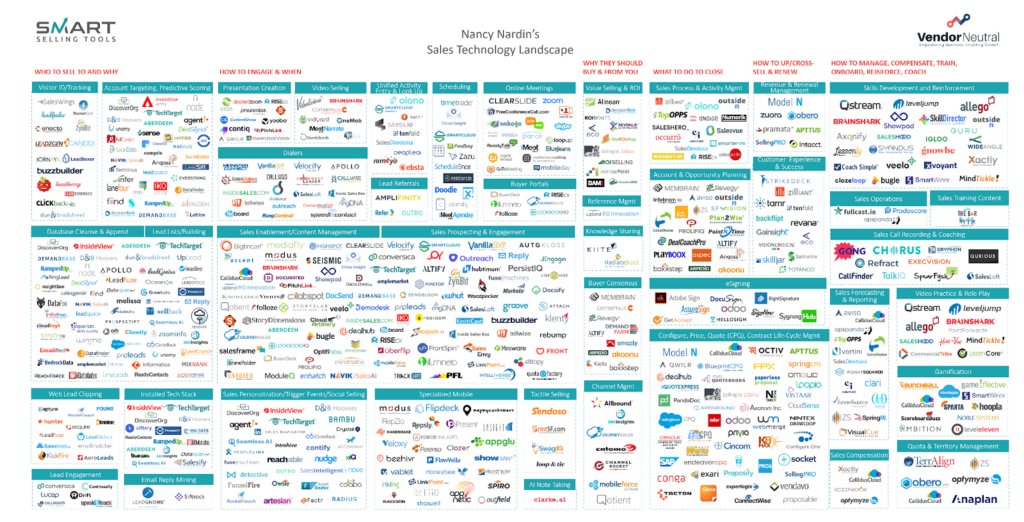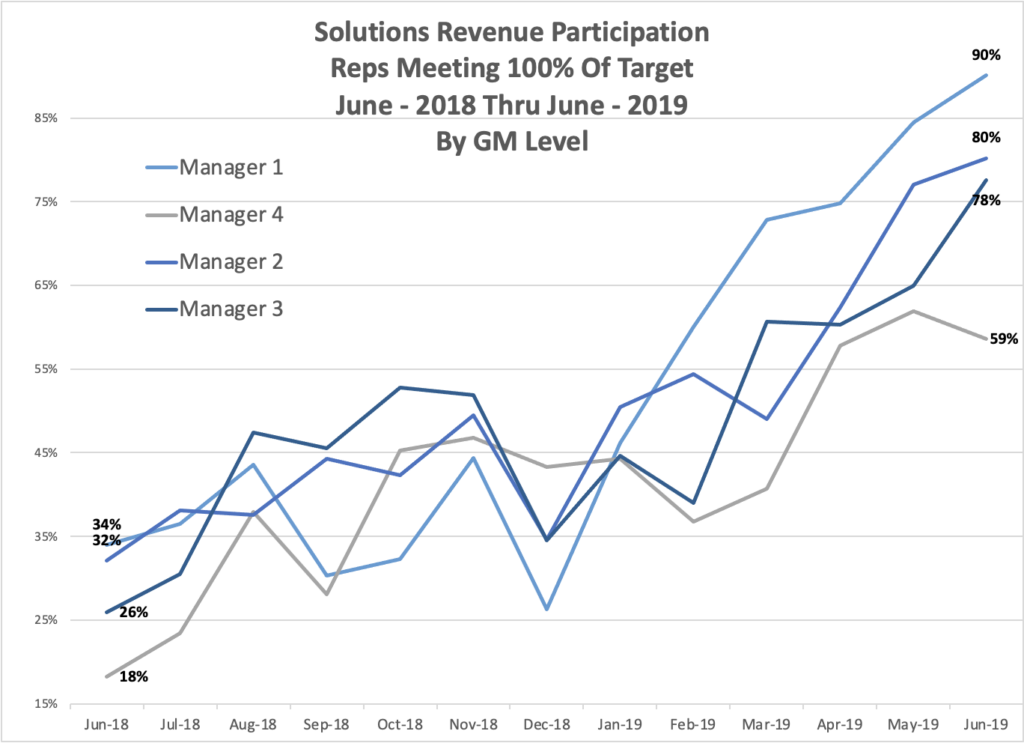In the last two years, revenue operations leaders have faced increasing challenges.
According to a 2021 Forrester report on buyer behavior, “the number of buying interactions during the pandemic jumped from 17 to 27! The number of buying interactions reflects one individual’s buying journey to obtain information about competing offerings or providers.”
The more touches a buyer has with your brand, the longer and more complicated the sales process can be. So, you need systems that help sales reps streamline their outreach and prioritize relationship-building with prospects and customers.
But delivering impactful sales tools fast is hard. And whether you need improved forecasting, a CPQ app, a customer success dashboard, or an opportunity management system, your experience must be flexible enough to adapt to ever-changing business needs.
Though it feels like a tall order, quickly building the right apps for your team is possible. Read on to learn how you can improve your business app development strategy and generate more revenue in the process.
High speed does not equal high impact
App development and digital transformation are faster than ever. In today’s technology landscape, there’s no shortage of sales software vendors promising to revolutionize the way your company does business.

Survey of sales technology, 2019 – https://vendorneutral.com/salestech-landscape/
Sifting through so many options requires a deep understanding of what your users need to deliver results. This will help you decide the best apps to build—and save you from iterating endlessly on tools your team won’t adopt.
Low visibility means lost revenue
The right apps, unlike crappy ones, integrate seamlessly with the systems your teams use every day to drive revenue. Yet, at many organizations, customer-facing teams work in silos. Sales reps use one app to manage opportunities, marketing uses another to track leads, and customer success handles accounts in a totally different system.
In these scenarios, complete visibility into the end-to-end buyer journey is impossible. Trapped in separate systems, revenue teams must construct the customer story in isolation. Customer insights stored in too many places get left behind.
Not only does this waste time, but continuously developing disparate solutions robs your organization of the results it needs. Spending cycles to build an app no one uses guarantees you won’t see a return on investment.
To deliver impact to your sales teams, you not only need to build the right apps, you also need the right methodology to navigate the design process.
Delivering actionable insights with human-centered design
Impact happens when you start with the human. With human-centered design, you can build apps your users love and deliver results that increase revenue—and you can do it fast.
Though it may seem counterintuitive, the first step to quickly delivering the right app is slowing down. First, understand the problem, beginning with users’ pain points. Define the issue and desired outcome before ideating potential solutions.
That’s the first step to human-centered design: getting into the mind of the user. Start looking at how your sellers are actually doing their job. What’s their current process like, and how could it be improved?
Investigate the problem and pause to understand the whole conversation. Ask, are reps going multiple places to gather the information they need to sell? Do they want a faster way to calculate and log quotes? If they continue to favor spreadsheets over the tools you’ve deployed, what is Excel giving them that your tool isn’t?
Questions like these will get you to the heart of the issue and help you target outcomes. Then, with the goals defined, you can prototype quickly, listen, and iterate.
How to approach the buyer journey from end-to-end
To align your revenue teams around the end-to-end customer journey, they need to share vocabulary and processes. Get all your revenue teams—marketing, sales, customer success—on the same page and the increased visibility will drive impact and efficiency.
Break down information silos by defining the stages of the customer story. Track the customer’s situation, pain points, and goals over time. Get all your revenue teams to speak the same language and efficient communication will follow. The separate stages of the sales pipeline will evolve into a cohesive narrative.
With a common language established, then you can focus on your sales apps. Look at what data is most valuable to revenue teams, then build a toolkit that helps everyone access and interact with it. The best apps offer streamlined functionality and are intuitive to use. It doesn’t have to be complicated, and sometimes less is more. Bringing customer information together in one hub can make a huge impact immediately.
Sharing language and processes unlocks visibility across the board. Sales can view insights from marketing leads. Customer success can see what pain points led to a closed deal. And managers can analyze data and produce accurate reports faster. Users will intuitively adopt new apps and features, and new users will onboard fast, too.
And the best part? With Skuid, you can create sales apps on top of your existing technology stack that provide an end-to-end view of the buyer journey.
Deploying sales apps with speed and impact
Effective human-centered design solutions are hardly theory. Companies like T-Mobile and AMD have put these ideas into practice at an enterprise scale.
How T-Mobile helped its sales reps meet quota fast
T-Mobile’s sales teams used to travel far and wide to access their customer data. In order to target the right accounts, reps would cross-reference information on upgrade eligibility, devices, usage, rate plans, billing, and beyond from more than seven different apps. They conducted all this sales activity outside of Salesforce, making it impossible to track.
To get users out of spreadsheets and into an information hub that contained all the data sellers need in one place, T-Mobile called on Skuid to help.
First, Skuid and T-Mobile spent time getting to know the user. They sat with sellers and identified the data reps were chasing. T-Mobile then started rapid prototyping but found some reps were still using spreadsheets. So, they went back to the users, asked questions, and iterated again.
The output of that iteration is a hub for reps called Strategy Builder. It retrieves customer data from separate systems and organizes it for the sales team. Reps can sort through hundreds of accounts by rate plans, upgrade eligibility, monthly overage, and more. This allows them to target who to contact in minutes instead of hours.
The Strategy Builder also has built-in tools for note-taking and scheduling. Reps can access everything they need to make a sale, as well as links to tools not directly integrated with the hub. Plus, the marketing team is integrated too, allowing end-to-end insights.

T-Mobile reps meeting 100% of target from June 2018 to June 2019
Deployed in 2019, Strategy Builder adoption rates with sales teams skyrocketed.
New hires are also being onboarded quickly and intuitively with this single tool, no longer needing to learn how to navigate multiple databases. And the revenue results are even more impressive: dramatically up and to the right since the app’s implementation.
AMD streamlines sales ops, speeds forecasting by 8x
AMD (Advanced Micro Devices) is a California-based semiconductor company. Using a suite of disparate, homegrown sales apps was limiting AMD. It needed a single platform to support growth and improve forecasting.
AMD brought in Skuid to help unify its system and streamline workflows and data entry. The company created a forecasting app with a cloning capability to cut down on data entry. This allowed users to shift the focus to analysis, which was the end goal all along. The app reduces time spent forecasting from more than four hours a week to less than 30 minutes.
After building its first solution with Skuid, AMD experienced a culture shift. It realized more areas it could develop tools to streamline timely processes. This increased efficiency in multiple departments:
- Hours saved on administrative tasks each week with a revamped pricing system
- Faster load times thanks to better architecture: 15 seconds instead of 15 minutes
- More accurate prediction of worldwide supply and demand with tracking assistance
Defining goals, rapidly developing apps, and delivering impact
The right revenue operations apps streamline processes and deliver impact. They facilitate better results across all your customer-facing teams. Strategies like employing human-centered design and developing a shared vocabulary align your revenue organization. With them, you can create more visibility in your revenue engine and generate results.
To help organizations implement these strategies, Skuid launched the SPICED app, a tool based on the SPICED framework developed by Winning by Design.
The app features an opportunity calculator and manager dashboard. It allows all your customer-facing teams to align under one set of definitions and track customer needs over time. All teams can access and contribute information, and managers can view the sales process end-to-end.
Learn more about the SPICED app and framework, and start streamlining your teams today.







